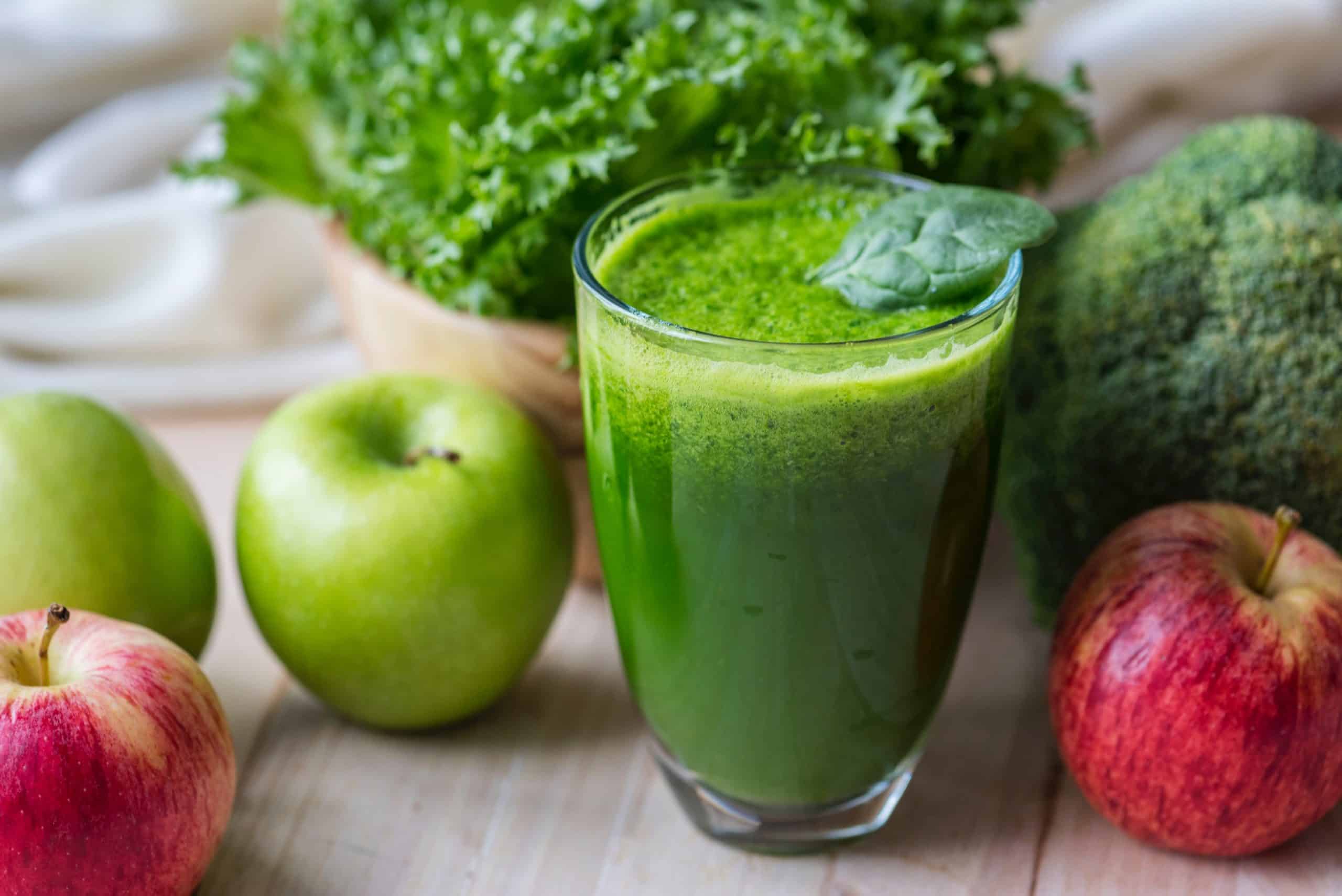Juicing 101

It’s the most sought-after selfie in the wellness world: a vibrant juice. And in 2019, it’s celery juice.
Spanning the internet and social media are miraculous, cure-all claims of fruit and veggie juice: It can heal your acne, rid your belly fat, balance your hormones, do your taxes. Ok, maybe not your taxes, but our point is this: What’s with the hype? Does juicing reign supreme – or is it just pretty? Let’s break down the facts.
What is juicing?
Fruits and vegetables are primarily made of fiber, water, sugar, and micronutrients. The act of juicing sifts out the fiber (or pulp), resulting in a liquid of water, sugar, and micronutrients. A standard glass of juice requires 4 pieces of fruits and/or veggies.
Here are some of the cases made in favor of and against this trend (note: we’ll review the hard evidence at the end!).
Pros
- Most juices contain multiple fruits and veggies, so they are highly-concentrated in micronutrients: vitamins, minerals, and phytonutrients (the good, disease-fighting chemicals in plants!). Therefore, juicing is an easy way to ingest lots of micronutrients very quickly.
- Fruits and veggies contain a lot of water, so juices are also hydrating.
- Variety! You may find yourself consuming veggies you wouldn’t normally gravitate towards – like beets or ginger root. Or, if you can’t stomach eating fruits or veggies at all, juicing is an alternative to still benefit from their nutrients.
- In a whole fruit or vegetable, you would need to chew, digest, and breakdown the fiber in order to extract nutrients. In juice, that extra prep work is done for you. It’s theorized your body can more efficiently absorb micronutrients from juice.
Cons
- Most juices tend to have a high sugar content — sometimes greater or equivalent to that of a soft drink. This sends your blood sugar and insulin levels up the roof. Over time, frequent blood sugar and insulin spikes put you at risk for type 2 diabetes and heart trouble.
- Juicing removes all fiber. (You can learn more about fiber here – bottom line: you want it; you need it.) In fruits, fiber slows the digestion of the natural sugars, reducing rapid spikes in blood sugar and insulin.
- Juice isn’t as filling (due to the lack of fiber), so you may still be hungry afterwards.
- More sugar and more calories. Eating the whole fruit is built in portion control. Put this into perspective: It takes three apples to make just one cup of apple juice. You could easily guzzle a cup of juice, but eating 3 apples? Probably not.
What about the health claims?
As with anything, #NoomNerds, put on your critical glasses when you hear of a miracle diet or food. Daily juicing is often advertised as improving your immune system, reducing your risk of cancer, and more. All these things are true for fruits and vegetables prepared in any fashion. You can reap all the same benefits by including whole, blended, or juiced fruits and veggies in your diet. There is no solid evidence to support that juicing is superior.
What’s the bottom line?
Whole fruits and vegetables have healthy fiber, which is lost during juicing. The overall benefit of juice is a concentrated source of beneficial micronutrients, which some folks anecdotally correlate to improved energy and health. The overall downfall of juice is its often high sugar content and lack of beneficial fiber.
Fruit and vegetable juice can be consumed in moderation as part of a balanced diet – not as a full meal replacement. It’s safe to experiment with juicing with an open mind to read how your unique body reacts. If you do try it, aim to juice mostly vegetables, with a small piece of fruit as sweetener – like an apple or kiwi. This keeps the sugar content at bay. Although, if you have diabetes or condition that requires you to be extra mindful about your sugar intake, consult your doctor for more personalized advice.
(PS: Interested in drinking your fruits and veggies, but sad about missing out on fiber? Try blending! Smoothies are a great option.)

